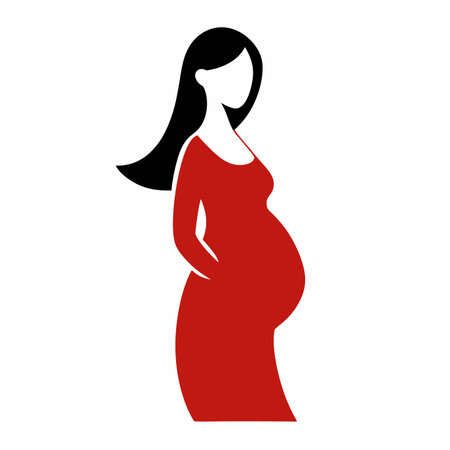Introduction to Parental Leave in the UK
Parental leave policies in the United Kingdom are designed to support new parents, ensuring both mothers and fathers have the opportunity to balance work and family life following the birth or adoption of a child. The UK system is structured around statutory entitlements that provide a foundation for parental support, though these policies can differ significantly from those found in other European countries. To understand how the UK compares with its neighbours, it’s important to first explore what is currently offered within the UK—including eligibility requirements, statutory pay provisions, and the prevailing cultural attitudes towards taking parental leave.
Statutory Parental Leave Entitlements
| Type of Leave | Duration | Statutory Pay (as of 2024) | Eligibility Criteria |
|---|---|---|---|
| Maternity Leave | Up to 52 weeks | Statutory Maternity Pay: 90% of average weekly earnings for first 6 weeks, then £172.48 per week (or 90% of average weekly earnings if lower) for next 33 weeks | 26 weeks’ continuous employment by the 15th week before the due date |
| Paternity Leave | Up to 2 weeks | Statutory Paternity Pay: £172.48 per week or 90% of average weekly earnings (whichever is lower) | 26 weeks’ continuous employment by the 15th week before the due date |
| Shared Parental Leave | Up to 50 weeks (shared between parents) | Statutory Shared Parental Pay: £172.48 per week or 90% of average weekly earnings (whichever is lower) | Both parents must meet work and earnings criteria; mother/primary adopter must be eligible for maternity/adoption leave or pay |
Cultural Attitudes Towards Parental Leave
While statutory rights are clearly defined, cultural attitudes play a significant role in how these entitlements are utilised. In the UK, many mothers take their full entitlement to maternity leave; however, uptake of paternity and shared parental leave remains relatively low compared to some other European nations. Factors influencing this include financial considerations, workplace culture, and traditional gender roles regarding childcare responsibilities.
Key Features of UK Parental Leave
Understanding the key features of the UK’s parental leave policies is essential for families navigating work and family life. The UK offers a statutory framework designed to support both mothers and fathers through various forms of leave, including maternity, paternity, and shared parental leave. Below, we provide an overview of these entitlements, focusing on duration, pay, and flexibility.
Statutory Maternity Leave
Mothers in the UK are entitled to up to 52 weeks of statutory maternity leave. This is divided into Ordinary Maternity Leave (the first 26 weeks) and Additional Maternity Leave (the following 26 weeks). Eligibility for pay during this period depends on employment status and earnings.
| Entitlement | Duration | Statutory Pay |
|---|---|---|
| Maternity Leave | Up to 52 weeks | 39 weeks paid: First 6 weeks: 90% of average weekly earnings Next 33 weeks: £172.48/week or 90% of average weekly earnings (whichever is lower) |
Statutory Paternity Leave
Partners can take up to two consecutive weeks of paternity leave, provided they meet certain employment criteria. Statutory Paternity Pay is set at either £172.48 per week or 90% of average weekly earnings (whichever is lower).
| Entitlement | Duration | Statutory Pay |
|---|---|---|
| Paternity Leave | Up to 2 weeks | £172.48/week or 90% of average weekly earnings (whichever is lower) |
Shared Parental Leave (SPL)
SPL provides increased flexibility for families, allowing parents to share up to 50 weeks of leave and up to 37 weeks of pay between them, depending on eligibility. Leave can be taken in blocks or all at once, enabling both parents to be involved in early childcare.
| Entitlement | Total Duration Available | Pay Structure | Flexibility |
|---|---|---|---|
| Shared Parental Leave (SPL) | Up to 50 weeks (combined) | Up to 37 weeks paid at £172.48/week or 90% of average weekly earnings (whichever is lower) | Can be split into blocks; parents can take time off together or separately; requires coordination with employer(s) |
Main Takeaways for UK Families
The UK’s statutory parental leave system offers moderate duration and pay compared with other European countries. While it provides some flexibility—particularly via SPL—the financial entitlements may not fully replace previous income for many families. Nonetheless, these policies aim to give parents choices in how they balance work and caring responsibilities during the crucial early months of their child’s life.

3. Comparison with Northern and Western European Countries
When examining parental leave policies across Europe, the UK’s provisions are often contrasted with those in Northern and Western European countries, particularly Sweden, Norway, Germany, and the Netherlands. These countries are frequently cited as benchmarks for progressive family support systems. Below is a comparison focusing on key aspects: leave duration, pay rates, and approaches to parental equality.
| Country | Total Leave Duration (Maternity + Paternity/Parental) | Pay Rate | Parental Equality Measures |
|---|---|---|---|
| United Kingdom | Up to 52 weeks (39 weeks paid) | First 6 weeks at 90% of average weekly earnings; remaining 33 weeks at flat rate (£172.48/week, 2024) | Shared Parental Leave allows some flexibility, but uptake among fathers remains low |
| Sweden | 480 days (approx. 68 weeks) per child, shared between parents | 80% of salary for the first 390 days (up to a ceiling); flat rate thereafter | Each parent has 90 reserved days (“use it or lose it”), promoting gender equality |
| Norway | 49 weeks at full pay or 59 weeks at reduced pay, shared between parents | 100% or 80% of salary (up to a ceiling) | “Fathers quota” ensures dedicated leave for fathers; strong emphasis on equal parenting |
| Germany | Up to 14 months of parental allowance if both parents take at least two months each | 65-67% of net income (up to €1,800/month) | Non-transferable “partner months” encourage both parents’ involvement |
| The Netherlands | Maternity leave: 16 weeks; Paternity/Partner: up to 6 weeks (as of 2024) | Maternity: full pay; Partner leave: one week at full pay, additional five weeks at 70% | Recent reforms have expanded partner leave to promote greater gender balance |
Key Differences in Leave Duration and Pay
The UK offers up to 52 weeks of maternity leave, but only 39 weeks are paid—and most at a statutory flat rate rather than a percentage of salary. In contrast, Sweden and Norway provide generous paid leave that can be shared flexibly between parents. German policy incentivises both parents to take leave by offering extra months when both participate. The Dutch system also recently improved partner leave allowances.
Promoting Parental Equality
Northern European countries lead in promoting gender equality through non-transferable quotas—such as Sweden’s “daddy months” and Norway’s “father’s quota”—which strongly encourage fathers’ participation. The UK’s Shared Parental Leave scheme was designed with similar intentions but has seen limited uptake due to lower pay rates and cultural factors.
Cultural Context and Outcomes
The differences reflect broader cultural attitudes towards work-life balance and gender roles. Countries like Sweden and Norway normalise active fatherhood from early childhood, while the UK continues to face challenges in encouraging fathers to take extended leave. This disparity impacts not only parental wellbeing but also long-term child development outcomes and gender equality in the workplace.
4. Comparison with Southern and Eastern European Countries
When examining how the UK’s parental leave policies stack up against those in Southern and Eastern Europe, significant differences emerge in both duration and pay entitlements. Countries like Spain, Italy, Poland, and Hungary each have distinctive systems shaped by local legislation and cultural expectations regarding family life.
Length and Structure of Leave
| Country | Maternity Leave Duration | Paternity Leave Duration | Parental Leave (Shared) |
|---|---|---|---|
| UK | Up to 52 weeks (39 weeks paid) | 2 weeks | Up to 50 weeks shared (37 weeks paid at reduced rate) |
| Spain | 16 weeks (fully paid) | 16 weeks (fully paid) | No additional shared leave, but both parents have equal rights |
| Italy | 5 months (80% pay) | 10 days (100% pay) | Up to 6 months per parent (30% pay until child is 12) |
| Poland | 20 weeks (100% pay) | 2 weeks (100% pay) | 32 weeks parental leave (60–80% pay depending on choice) |
| Hungary | 24 weeks (70% pay) | 5 days (100% pay; can be extended unpaid) | Up to 3 years parental leave (flat-rate benefit after first year) |
Pay Entitlements and Flexibility
The UK’s system offers flexibility through shared parental leave, but pay rates are generally lower compared to many Southern and Eastern European nations. For example, Spain provides equal fully-paid leave for both parents, reflecting a progressive approach toward gender equality. In contrast, while Hungary grants an extended period for parental care, the financial support drops substantially after the initial months, which can impact family income stability.
Cultural Attitudes and Uptake
Cultural expectations also play a role in policy design and uptake rates. In countries like Italy and Spain, there is a growing emphasis on encouraging fathers to take leave, supported by generous statutory entitlements. However, in Poland and Hungary, traditional roles still influence the proportion of men utilising their full paternity or parental leave allowances. The UK has made steps to promote shared responsibility through its Shared Parental Leave scheme but uptake remains modest due to financial considerations.
Nursing Perspective: Supporting Families Across Borders
Nurses and midwives working with diverse families should be aware of these policy differences as they may influence parental expectations and postnatal support needs. Understanding these international comparisons helps provide culturally competent guidance, particularly for migrant families navigating the UK maternity system for the first time.
5. Challenges and Opportunities for UK Families
The practical realities of parental leave policies in the UK present a mixed picture for families, with unique challenges and emerging opportunities that differ from many other European countries. Below, we explore how these factors influence parental decisions, workplace culture, and societal attitudes.
Practical Implications of UK Parental Leave Policies
UK parents face several practical hurdles when considering taking full advantage of their statutory leave. While the Shared Parental Leave (SPL) scheme offers flexibility, uptake remains relatively low due to financial constraints and complex eligibility requirements. For many families, statutory pay rates are insufficient to cover household expenses, compelling some parents—especially fathers—to return to work earlier than they would prefer.
Public Perceptions and Societal Attitudes
Societal norms in the UK still largely associate childcare responsibilities with mothers, despite policy efforts to encourage shared parenting. This cultural expectation can place additional pressure on women to take extended leave while discouraging men from fully utilising available entitlements. There is growing advocacy for normalising paternal involvement in early child-rearing, but progress remains gradual compared to leading European nations such as Sweden or Norway.
Workplace Culture: Barriers and Progress
The attitude of employers plays a significant role in shaping parental leave experiences. While larger organisations may offer enhanced parental benefits or actively promote family-friendly practices, smaller businesses often struggle to accommodate prolonged absences due to limited resources. Additionally, concerns about career progression and workplace stigma persist, particularly among fathers who wish to take extended leave.
Comparison of Key Workplace Factors
| Factor | UK | Rest of Europe |
|---|---|---|
| Statutory Pay Rate | Lower (SMP/SPL: 90% for 6 weeks, then £172.48/week) | Generally higher (Nordic countries up to 80-100% for longer periods) |
| Paternity Leave Uptake | Low (~2-8%) | High (up to 80% in Scandinavia) |
| Employer Support | Variable; depends on company size/policy | Often more standardised or generous |
| Cultural Acceptance of Fathers Taking Leave | Evolving; still some stigma | Broadly accepted (especially in Northern Europe) |
Impact on Parents’ Ability to Take Leave
The intersection of public perception, policy detail, and workplace support directly impacts whether parents can make full use of their entitlements. Until financial support increases and cultural barriers are further dismantled, many families will continue to face difficult choices between career stability and family wellbeing.
Towards Greater Opportunity
Despite these challenges, there is an opportunity for the UK to learn from European neighbours by investing in more comprehensive support systems and fostering an inclusive culture around parental leave. Ongoing public dialogue and legislative review remain crucial steps towards ensuring that all parents—regardless of gender or occupation—can access meaningful time at home during the critical early months of parenthood.
6. Recent Developments and Future Directions
In recent years, the landscape of UK parental leave has witnessed several noteworthy developments, reflecting both domestic priorities and the influence of broader European trends. Policymakers have been actively engaged in consultations to modernise the current system, with a focus on enhancing flexibility and gender equality.
Ongoing Consultations and Government Initiatives
The UK government launched consultations in 2019 and 2021 to review the Shared Parental Leave (SPL) scheme, which had experienced low uptake compared to expectations. Key areas under consideration include simplifying the application process, increasing financial incentives, and improving awareness among parents and employers. The government has also examined proposals for extending statutory paternity leave from two weeks to up to four weeks, aligning more closely with countries like Sweden and Norway.
Recent Policy Changes
There have been incremental adjustments to statutory rates and eligibility criteria. For instance, statutory maternity pay was increased in April 2023 in line with inflation. Additionally, new provisions introduced in April 2024 allow parents whose babies are born prematurely or require neonatal care to claim additional paid leave—an initiative inspired by similar policies already established in Scandinavian countries.
Comparison Table: Current UK vs Selected European Countries
| Country | Maternity Leave (weeks) | Paternity Leave (weeks) | Shared/Parental Leave (weeks) |
|---|---|---|---|
| UK | 39 paid / 52 total | 2 | Up to 50 (shared) |
| Sweden | 12-14 (part of 480 days shared) | 10 (part of 480 days shared) | Approx. 69 (480 days total for both parents) |
| Germany | 14 | 2 | Up to 36 (parental allowance period) |
Alignment with European Trends
The EU’s Work-Life Balance Directive, effective since August 2022, sets out minimum standards for paternity leave and introduces non-transferable parental leave quotas for fathers. While the UK is not bound by this directive post-Brexit, ongoing reforms show an intent to keep pace with continental practices. There is growing advocacy from professional bodies such as the Royal College of Midwives and trade unions for more equitable parental leave entitlements, particularly regarding fathers’ rights.
Looking Ahead: Potential Reforms
The future direction of UK parental leave policy may include:
- Extending paid paternity leave duration
- Simplifying access to SPL and raising awareness
- Introducing individual, non-transferable parental leave quotas for each parent
- Piloting flexible working arrangements alongside enhanced parental benefits
These changes aim not only to support families during the critical early months but also to promote gender equality in caregiving responsibilities—a trend increasingly mirrored across Europe.


